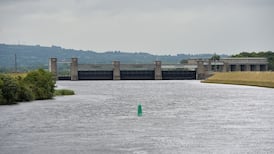I try, where possible, to avoid the weather forecast. For my work, it’s undoubtedly helpful to know if it’s stormy or sunny in the days ahead, but my mood is better off in eternal – if ignorant – optimism rather than certain knowledge that tomorrow will be another cloudy one.
Not knowing puts me at an obvious disadvantage. The ability to predict the next few days is powerful; seeing decades into the future is like a superpower. If your work depends on the weather, having access to as much of this data as possible is not only a helpful strategy, it’s vital for long-term success.
In his many contributions to the media over the past few decades, Maynooth scientist John Sweeney has never struck me as the kind of person who would say: “I told you so.” So, I’ll say it for him instead: John told us so.
From the early 2000s, Sweeney and his fellow researchers repeatedly flagged the high likelihood that climate change would significantly alter the temperature around us and the frequency of rainfall, sunshine and storms. Their papers, which modelled the impact of a rapidly warming climate on Ireland’s weather patterns, depicted a forecast very different from what we had been used to.
READ MORE
Summers would be warmer, with an increased risk of drought; winters would be longer, with more rainfall and fewer days of frost. The potato would likely no longer be commercially viable, and fields of green would start to turn a new colour – brown – from the dry summers. One paper from 2008 put it succinctly: “The Irish who sense that the weather has changed in their lifetimes are not making outrageous claims: Their casual observations are corroborated by scientific assessments.”
Farmers are at the top of the list when it comes to those whose livelihoods depend on accurate and informed predictions not only about day-to-day weather but also the long-term patterns and averages of weather over many years and how it is shaped by climate change. Agriculture is entirely dependent on the weather. The dairy sector, for example, is based on grass – an economical way to feed cows – but the grass won’t sufficiently grow if it’s too cold, wet, dry or hot, no matter how much fertiliser is spread. Without knowing what is ahead, farmers put their systems in a precarious financial position in the longer term.
You’d imagine everyone in the agri-food industry, particularly those in power, would have scrambled to ensure that farmers knew exactly what scientists were predicting. Instead, when the Government-endorsed, industry-led expansion plan, Food Harvest 2020, was published in 2010 – funded with millions of public money – it did not address the most critical farming factor: the scientific modelling which predicted that agriculture would soon face very different weather patterns than before.
The plan promised a vision of a “dynamic, forward-looking agri-food industry”, but farmers had to do the hard work of reshaping their farms and finances. Yet, within the Government’s particular model of expansion, it seems there was little, if any, space given to making sure farmers had the climate data they needed to plan ahead for a more sustainable business which met the changing conditions. It contributed to a vacuum within which climate scepticism and denial would inevitably flourish.
A few years after the plan was published, I spoke to a farmer in Donegal who was perplexed and worried about how the extreme weather affected his land. The rain had become so intense that he had to stop what he was doing when it fell. He’d been farming all his life and had “never seen it this bad, and neither has my dad”. He didn’t know what to expect in the future or whether he should continue to farm as he did. “Something is changing,” he told me. “I just don’t know what it is.” Desperate for advice and local information about how climate change was affecting his farm – and how best he should prepare for it in the future – I asked him what others in his sector were saying? “Nobody is talking about it.”
In 2018, the extreme snow in spring – which the State agriculture agency Teagasc claimed was “unique” – was followed by a prolonged drought during the hottest summer period on record in over two decades. Farm income dropped, and the stress of trying to keep animals alive in the cold, and well-watered in the heat, brought some farmers to breaking point. But 2018 was no outlier; later that year, Sweeney warned that the weather would likely become even more extreme in the years ahead.
In helping farmers – and the rest of us – to access high-quality, up-to-date climate data, perhaps Met Éireann and RTÉ could take inspiration from France Télévisions, the national public television broadcaster. Last year, following one of the hottest summers on record, the broadcaster decided to expand its daily seven-day weather forecast to include a climate change report. Every evening at 8pm, 3.6 million viewers watch the forecaster explain the climatic conditions with a live display counter showing how much hotter the country is compared to a century ago. Viewers can scan a QR code to send questions to scientists (Sunday evenings are reserved for questions sent in by children). In the future, the team plans to use 3D models and augmented reality to further explain the complexities of climate change.
Dairy farmers are coming out of a brutal 10 months of wet weather. They’re being told to prepare for longer winters ahead, so they’ll have to budget for more animal feed, housing and slurry storage from now on. None of this is surprising; the predictions were always there.
The powers that be should have paid more attention to climate scientists then. They’d do well to do so now.














